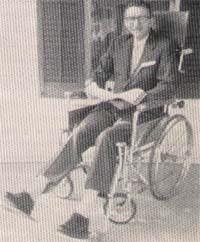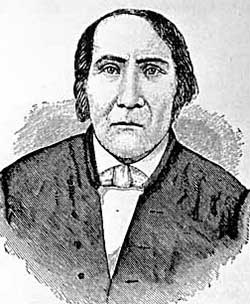Home Religion in Colonial America
In the years prior to the American Revolution, Presbyterians were already emigrating into Western Pennsylvania with their families. This was no easy move on their part. Native Indian tribes were resistant to this westward expansion. The further these Presbyterians moved away from civilization, the fewer helps and conveniences moved with them. More than that, these pioneers often left behind the anchor of an ordained ministry of the gospel.
In 1772, the Presbytery of Donegal appointed the Rev. David McClure to take a spiritual tour of Presbyterians west of the Allegheny mountains. We know very little about him as a person. He was from Ulster, or northern Ireland as we know it today. Some said he was from Londonderry, Ulster. He had traveled to Rhode Island, and then come down to the middle colonies. First sent to the Delaware Indians, they had rejected his message of salvation. So he became an itinerant minister and thus was open to the trip west for the Presbytery.
Writing a remarkable diary, he observed once that “truly the people here in this new country are as sheep scattered upon the mountains without a shepherd. May the good Lord raise up and send forth faithful laborers into this past of His vineyard.” He didn’t have long to wait for the fulfillment of that prayer.
Notice his words on April 8, 1773. He comments in his diary, “The inhabitants west of the Appalachian mountains are chiefly Scotch-Irish Presbyterians. They are either natives of the north of Ireland, or the descendants of such and removed here from the middle colonies. There are some Germans, English, and Scotch. The Presbyterians are generally well indoctrinated in the principles of the Christian religion. The young people are taught by their parents and school masters, the Larger and Shorter Catechisms, and almost every family has the Westminster Confession of Faith, which they carefully study.”
 Along with the Bible and the Westminster Standards, usually the Scotch-Irish families of the wilderness possessed Thomas Boston’s Fourfold State, and one of the commentaries, such as Matthew Henry. With these within their grasp, time in the morning and evening of each day would be set aside for reading and prayers and memory work. When a traveling pastor would come through, like David McClure, he would spend time asking the family members questions from the Bible and the Standards. Those who answered faithfully would be given communion tokens, upon which they would turn in and receive communion on the Lord’s Day. Those who failed in their spiritual understanding would not receive the token and would be sufficiently warned to do better in their Christian experience the next time a minister would visit.
Along with the Bible and the Westminster Standards, usually the Scotch-Irish families of the wilderness possessed Thomas Boston’s Fourfold State, and one of the commentaries, such as Matthew Henry. With these within their grasp, time in the morning and evening of each day would be set aside for reading and prayers and memory work. When a traveling pastor would come through, like David McClure, he would spend time asking the family members questions from the Bible and the Standards. Those who answered faithfully would be given communion tokens, upon which they would turn in and receive communion on the Lord’s Day. Those who failed in their spiritual understanding would not receive the token and would be sufficiently warned to do better in their Christian experience the next time a minister would visit.
It was serious business being a Christian in colonial times.
Words to Live By: What place does the Word of God and the Westminster Standards have in your home? Are they strangers to the members of your family? Do they have just a nodding acquaintance with you? Or do they form the backbone of your faith and life? It is not without purpose that our historical devotionals in this year’s reading include both Scripture and Standards on a day-by-day basis. Apply them to your family members and their age groups, so as to bring back the early Presbyterian practice of being trained up in the fear of the Lord.

 presented by Rev. Harry H. Meiners Jr. at the Uniting Service of the Evangelical Presbyterian Church and the Reformed Presbyterian Church in North America; General Synod on April 6, 1965 forming the Reformed Presbyterian Church, Evangelical Synod.
presented by Rev. Harry H. Meiners Jr. at the Uniting Service of the Evangelical Presbyterian Church and the Reformed Presbyterian Church in North America; General Synod on April 6, 1965 forming the Reformed Presbyterian Church, Evangelical Synod.